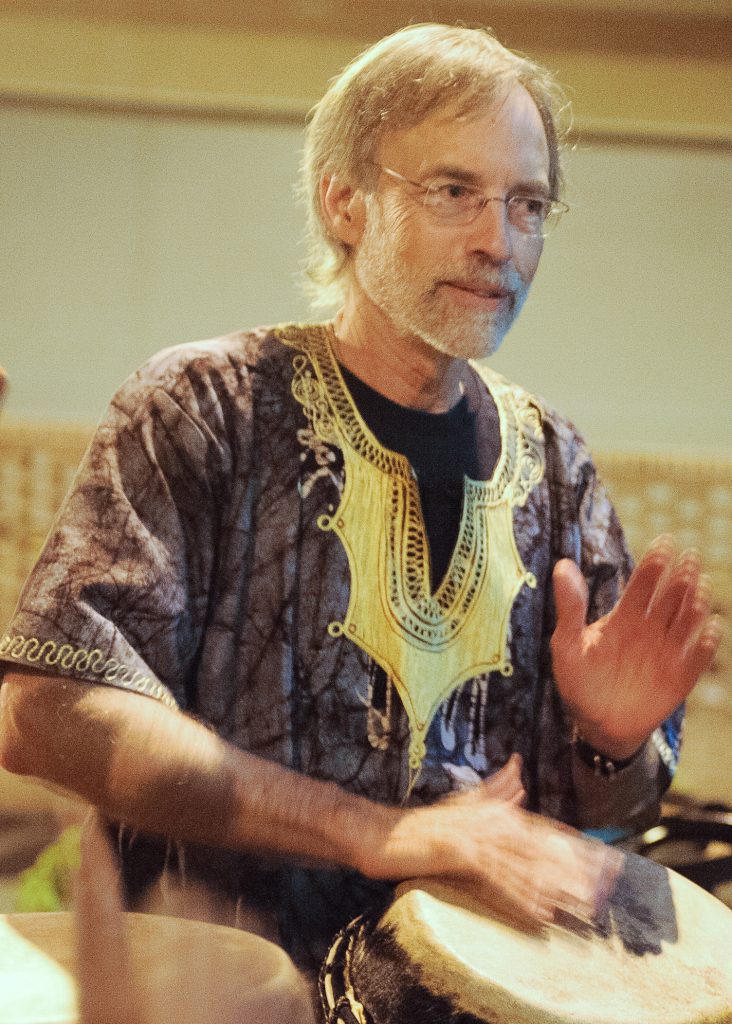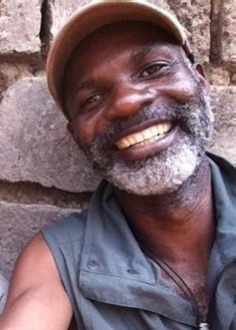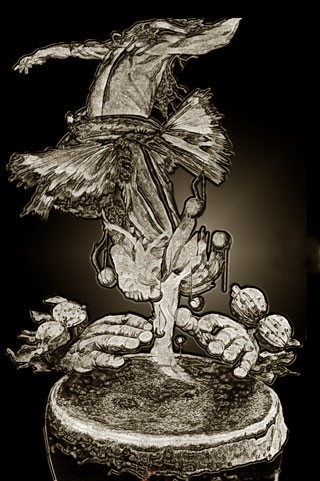
Ken Wilson, originally from Chapel Hill, NC, is an emeritus Duke physician-scientist. In 1980 he heard a concert given by Congolese drummers Biza Sompa and Batantou Dia N’Kaba. Blown away, he started study with both these drummers and has continued to study and play to this day. He is currently one of relatively few in the U.S. to carry in memory a large part of the Brazzaville National Dance Troupe’s drum repertoire. He currently studies and plays with professional Congolese drummer Pline Mounzeo of Raleigh.
Ken took care of patients with AIDS for decades, starting in 1982 near the beginning of the epidemic. One of his dying patients became spontaneously enlightened and was a factor leading him much later, in the year 2000, to start Zen practice. After 10 years of practicing Zen, he became interested in the connection between Buddhism and shamanism.
Today his understanding is that ancient shamanism evolved in India into forest yogan practice and then Buddhism. Thus, both are within the shamanic diaspora, which includes the Ngoma tradition (see above) as well as many diverse others including serious yoga, contemplative Christianity, Taoism, Sufism and Kabbalah. Anthropologist Michael Winkelman describes these practices as representing “the integrative mode of consciousness”. They help integrate groups to be more socially cohesive, help integrate the emotional lives of individuals, help people transition and help people understand and modulate their relationship with the world at large. This is why such practices are important despite our own culture’s lack of emphasis, and appear to have been universal among human cultures for perhaps as long as 200,000 years.
This exploration of the nature of spiritual traditions had led right back to Congolese drumming – ngoma the drum and Ngoma the healing tradition. After conducting clinical research on modified Ngoma ceremonies at Duke prior to his retirement, Ken is interested in bringing these ceremonies into the community. This is because if understood the right way for our culture, they could be helpful to many.
Contact at nzobi.k@gmail.com

Godi Godar Moteke Molanga of the Bantu Ntomba community grew up in the village of Ikongo Boginda, at the edge of Lake Tumba in the DRC. Grandson of the chief, he was next in line to lead, but a vivid boyhood vision foretold him leaving his home, traveling to an unknown land, and one day returning to support and protect his people.
When Godar was sixteen, Habitat for Humanity volunteer, Dean DeBoer, showed up in his village. Godi’s grandfather insisted they live together and learn each others languages and cultures. At the end of his three year stay, Dean invited Godar to travel to the US with him. Thus began the first phase of Godar’s childhood dream coming to fruition. He has lived in Durham, NC since his arrival in 1987.
23 years later Godar’s mother, Nsaba Koko, pled with her son to find a way to protect the land, waters, and forests surrounding his village. Logging companies were destroying the livelihood of his people, endangering wildlife, and polluting the air. Koko asked him, “How can we protect our homelands?” With that question, Godar’s purpose in leaving his tribe became clear.
In response to his mother’s pleas, Godar started Go Conscious Earth (GCEarth) in 2012. With strong ties to the local community and provincial government, he helped secure a temporary agreement to protect a one million acre tract of land surrounding his and neighboring villages. As of 2018, much of that land has now been converted to Community Forest Concessions, which provides the local people with legal rights to their land in perpetuity. From the beginning, it was clear that addressing the basic needs of the local people was an integral part of long-term forest conservation. Sustainable development initiatives such as clean water, non-timber forest product cultivation, and clean energy have always been at the heart of GCEarth’s approach.
For many years, Godar and volunteers have worked tirelessly to protect land rights, wildlife, clean water, and carbon rich rainforests. Their success has not only protected the health of people, animals, and ecosystems, but also proven the success of community-based anti-poverty initiatives to the DRC government.
In 2012, Godar’s mother passed away. Her final words to Godar were, “God will bless you in this project.”
Godi is also the nephew of a Zebola priest and the grandson of another. Zebola is both a lovely rhythm and the Congolese stress reduction school that uses this rhythm. Although Godi is not a priest, he is familiar with the ceremonies involved.
Contact at godi.godar@gmail.com

Jasmine Powell is a creative expressionist from Hillsborough, NC, who grew up in the Durham dance community. Having attended Oberlin College and Hollins University (MFA), she continues to investigate the interrelation of embodied integration through dance. Through her teaching, Jasmine joyfully brings cultural history, technique, and the creative process to the dance curriculum as a Performing Arts Professor at Elon University. Outside of academia, her passions have led her to dance with Philadanco, and work with notable choreographers: Dianne McIntyre, Milton Myers, Ronald K. Brown, and Okwui Okpokwasili. Performing locally, Jasmine stays connected to her NC home by sharing the stage as a company member with COMPANY and KT DANCE COLLECTIVE.
With her own artistry, Jasmine’s largest choreographic premiere, Approximation of a Woman, has led her to inhabit various performance theaters, local and international dance/film festivals, music videos and most recently Culture Mill’s Eclipse at Carolina Performing Arts. As an Embodiment Life Coach and Pilates Instructor, Jasmine supports the exploration of an individual’s history, which the body holds, and fosters wellness and reintegration towards our mind, body and soul systems. In addition to somatic therapies, Jasmine smiles at the opportunity to share her dance and choreography work rooted in conceptual storytelling and is always relating to others through a creative expressionist lens. http://jasminepowell.co/

